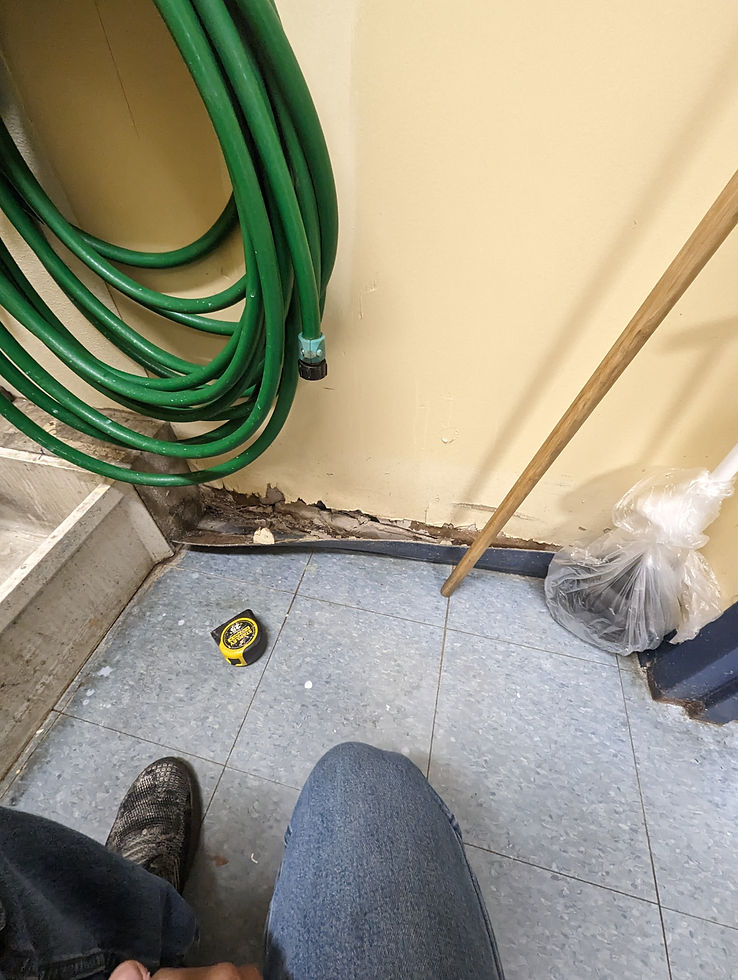
Mold: Identification, Causes, DIY Removal, and When to Call a Professional
- MHS CT LLC

- Jul 19, 2024
- 3 min read

As a general contractor, we often encounter mold issues in homes. Mold can pose significant health risks and damage your property if not addressed promptly. This post will guide you on how to identify mold, understand its common causes, perform DIY removal or remediation, and know when it’s time to call a professional.
How to Identify Mold
Mold can be identified through its appearance, smell, and the conditions of its environment:
1. Visual Identification: Mold often appears as black, green, white, or gray patches on walls, ceilings, or other surfaces. It can look fuzzy or slimy, depending on the type.
2. Musty Odor: A persistent, musty smell is a strong indicator of mold, even if you can’t see it. This odor is particularly noticeable in damp or poorly ventilated areas.
3. Health Symptoms: Mold exposure can cause health issues such as allergies, respiratory problems, and skin irritation. If you notice these symptoms worsening at home, mold could be the culprit.
4. Water Damage: Mold thrives in moist environments. Areas with water damage, leaks, or high humidity are prime spots for mold growth. Check for discoloration or water stains on walls and ceilings.
Common Causes of Mold
Understanding the common causes of mold can help prevent its growth:
1. Humidity: High indoor humidity, especially above 60%, can create an environment conducive to mold growth. Bathrooms, kitchens, and basements are particularly vulnerable.
2. Leaks: Water leaks from pipes, roofs, windows, or appliances can introduce moisture to areas that should remain dry. Regularly inspect these areas for signs of leaks.
3. Poor Ventilation: Inadequate ventilation traps moisture, providing a perfect breeding ground for mold. Ensure proper ventilation in areas like bathrooms, kitchens, and laundry rooms.
4. Flooding: After flooding, any remaining moisture can lead to mold growth within 24-48 hours. Prompt drying and cleanup are essential to prevent mold after a flood.
5. Condensation: Condensation on windows, walls, and pipes can provide enough moisture for mold to grow. Insulating surfaces and improving airflow can reduce condensation.
DIY Mold Removal and Remediation
For small mold problems, you can often handle the removal yourself. Here’s how:
1. Safety First: Wear protective gear, including gloves, goggles, and a mask, to avoid exposure to mold spores.
2. Contain the Area: Seal off the affected area to prevent mold spores from spreading to other parts of your home.
3. Clean the Surface: Use a solution of water and detergent or a commercial mold cleaner to scrub the mold off hard surfaces. Avoid using bleach, as it may not be effective on porous surfaces.
4. Dry the Area: After cleaning, thoroughly dry the area to prevent mold from returning. Use fans, dehumidifiers, or increase ventilation to speed up the drying process.
5. Discard Contaminated Materials: Porous materials like drywall, carpet, and insulation may need to be removed and replaced if heavily contaminated.
When to Call a Professional
While DIY methods work for small mold issues, there are situations where professional help is necessary:
1. Large Infestations: If the mold covers more than 10 square feet, it’s best to call a professional. Large infestations can indicate deeper issues and require specialized equipment and expertise.
2. Hidden Mold: If you suspect mold behind walls, under flooring, or in HVAC systems, a professional can perform a thorough inspection and safely remove the mold.
3. Health Concerns: If you or your family experience severe allergic reactions or respiratory problems, seek professional help to ensure a safe and thorough remediation.
4. Persistent Mold: If mold keeps returning despite your efforts to remove it, a professional can identify and address the underlying cause, ensuring long-term prevention.
Conclusion
Identifying and addressing mold promptly is crucial to maintaining a healthy home environment. While small mold issues can often be handled with DIY methods, larger or hidden infestations require professional intervention. By understanding the causes of mold and taking preventive measures, you can protect your home and family from its harmful effects.
If you have any questions about mold remediation or need professional help, feel free to reach out. As a contractor dedicated to quality and customer satisfaction, we're here to help you ensure your home is safe and mold-free.




For anyone ready to take the next step in their home's journey, professional home improvement services – from detailed kitchen interior design, carpentry and flooring installation to full-scale room additions and energy-efficient window replacements – are key to ensuring beauty, functionality, and lasting value.